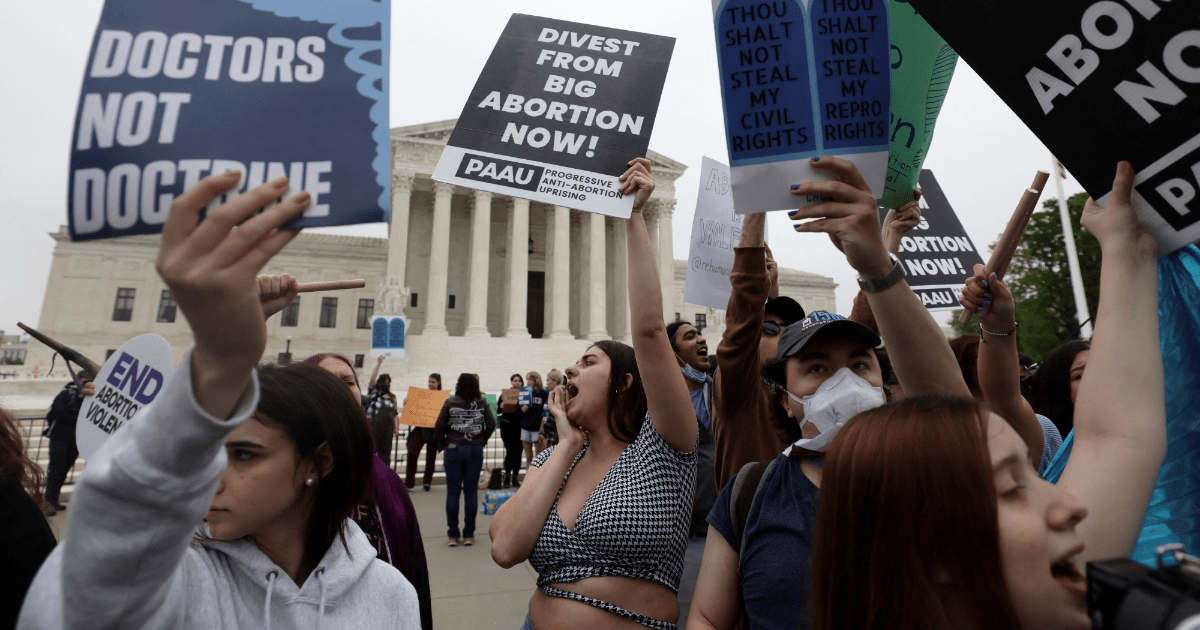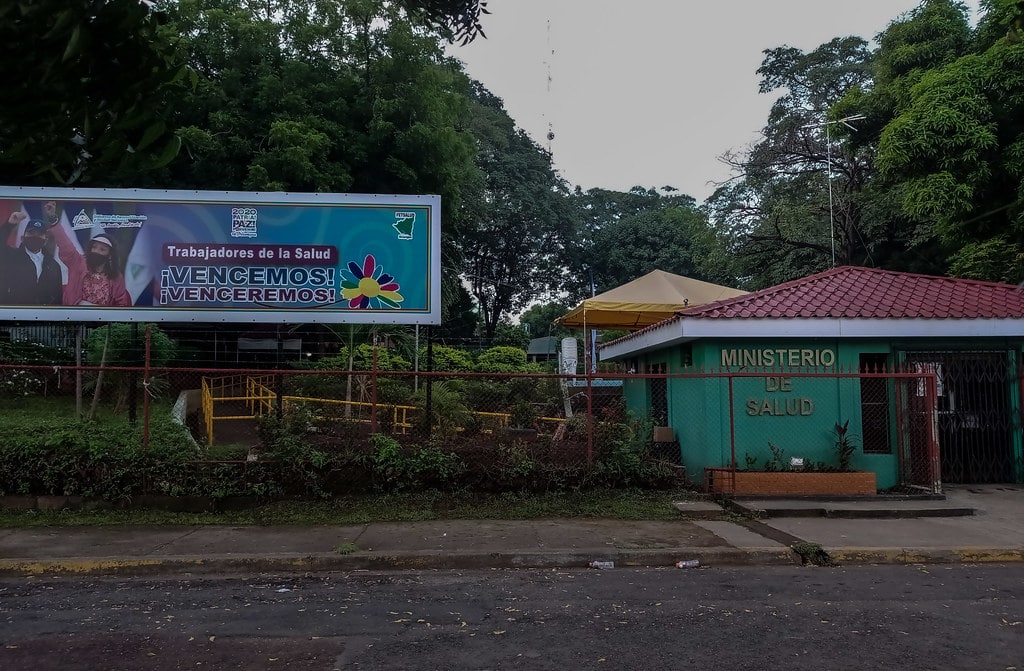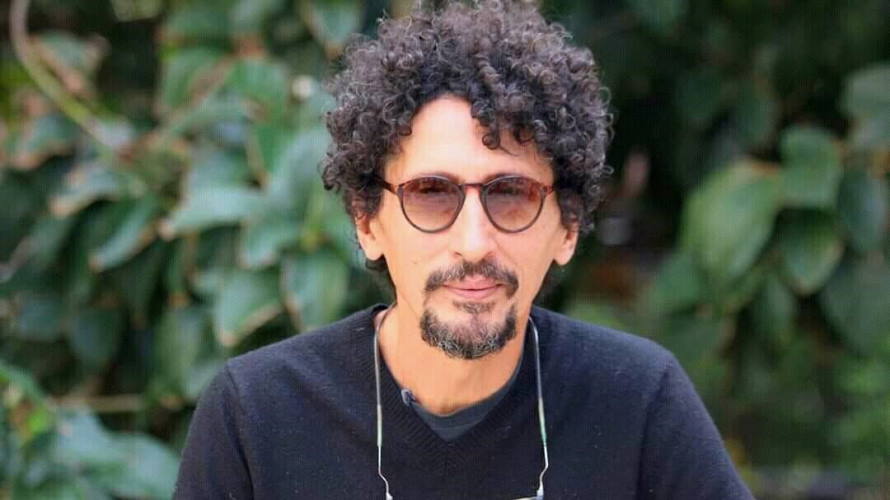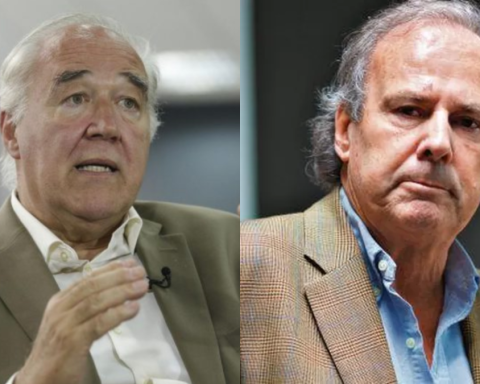After half a century, the US Supreme Court has struck down the constitutional right of American women to have an abortion.
The sentence in the case Dobbsv. Jackson Women’s Health Organization – issued on June 24, 2022 – has great consequences. The Conversation has asked nicole huberfeld Already Linda C McClainexperts in Health Law and Constitutional Law from Boston University, to explain what has just happened, and what will happen next.
What has the Supreme Court ruled?
The Supreme Court has decided, by a 6-3 majority, to uphold Mississippi’s abortion ban after 15 weeks of pregnancy. In doing so, the judges have overturned two key rulings that protected access to abortion: Roe vs. Wadefrom 1973, and Planned Parenthood vs. Caseyfrom 1992.
The court rulingwritten by Judge Samuel Alito, alleges that the Constitution does not mention abortion, nor does it guarantee the right to abortion through another right, the right to liberty.
The opinion rejects Roe and Casey’s argument that the constitutional right to liberty includes the Right to privacy of an individual to choose abortion in the same way that it does protect other decisions regarding intimate sexual conduct, such as contraception and marriage. According to the opinion, abortion is “fundamentally different” because it destroys the life of the fetus.
The court’s narrow focus on the concept of constitutional liberty is at odds with the broader position it took in the earlier Casey ruling, as well as in a landmark 2015 marriage equality case, Obergefell v. Hodges. However, the majority have stated in their ruling that the decision would have no impact on same-sex couples’ right to marry.
Alito’s opinion also rejects the legal principle of stare decision“, or adherence to precedent. Abortion rights supporters argue that the Casey and Roe rulings should have remained in effect since, in Casey sentence wordsreproductive rights allow women to “participate on equal terms in the economic and social life of the Nation”.
The ruling does not mean that abortion is prohibited throughout the United States. What it indicates is that discussions about the legality of abortion will take place now in state legislatureswhere, Alito pointed out, women “do not lack electoral or political power.”
States will be allowed to regulate or prohibit abortion only according to what is known as revision of “rational basis” – a weaker norm than the test for “undue burden” from Casey. Casey’s undue burden test prevented states from enacting restrictions that placed substantial obstacles in the way of people seeking abortions. Now, the prohibition of abortion will be considered legal as long as there is a “rational basis” for the legislature to believe that the law serves the legitimate interests of the State.
In a strong dissent, Justices Stephen Breyer, Elena Kagan, and Sonia Sotomayor criticized the court’s approach to liberty, questioning its disregard for both the stare decision as well as the impact that the annulment of Roe and Casey will have on the lives of women in the United States. Opponents declared that the effect of this decision would be “the curtailment of women’s rights and their status as free and equal citizens.” They also expressed deep concern about what the ruling will mean for poor women seeking abortions in the United States.
What place does this decision occupy in the history of reproductive rights in the United States?
This is a decisive moment. The court ruling has done what reproductive rights advocates have feared for decades: remove the constitutional right to privacy that protected access to abortion.
This decision has been in the making for decades. Thirty years ago, when the Casey case was being discussed, many legal experts thought that the court was preparing to revoke Roe. It then had eight judges appointed by Republican presidents, several of whom were willing to overturn the decision based on their dissenting opinions.
Instead, Republicans Anthony Kennedy, Sandra Day O’Connor and David Souter kept Roe. They revised their framework to allow more state regulation throughout pregnancy and weakened the test for evaluating those laws. According to the test of Roe’s “strict scrutiny”, any restriction on the right to privacy to access an abortion had to be “narrowly tailored” to promote a “compelling” state interest. But Casey’s “undue burden” test gave states more latitude to regulate abortion.
Even before the Casey decision, abortion opponents in Congress had greatly restricted poor women’s and members of the military’s access to abortion by limit the use of federal funds to pay for those services.
In recent years, states have adopted more restrictions that would not have survived Roe’s “strict scrutiny” test. Still, many state limitations have been overturned in federal courts under the undue burden test, including bans on previable abortions and so-called “TRAP” laws – selective abortion provider regulation – that make it difficult to keep clinics open.
President Donald Trump’s promise to appoint “pro-life” judges to federal courts — and his appointment of three conservatives to the Supreme Court — has finally made it possible the goal of opponents of legal abortion: nullify Roe and Casey.
What happens now?
Even before Dobbs, the ability to access abortion was limited by a patchwork of laws across the United States. Republican states have more restrictive laws than Democratic ones, and people living in the Midwest and South are subject to stronger limitations.
Thirteen states have so-called “trigger laws” that greatly restrict access to abortion. They will take effect soon now that the Supreme Court has struck down Roe and Casey, and will only require certification by the state attorney general or other action by a state official.
nine states they have laws prior to Roe, which were never withdrawn, which restrict or prohibit access to abortion. In total, almost half of the states limit access to abortion through a series of measures such as banning abortion after six weeks of pregnancy – before many women actually know they are pregnant – and limiting reasons why it can be aborted, such as its prohibition even in case of fetal anomalies.
Meanwhile, 16 states and the District of Columbia protect access to abortion in various ways, with state statutes, constitutional amendments, or state supreme court decisions.
None of the states that limit access to abortion currently criminalize the action of the pregnant person. Rather, they threaten health care providers with civil or criminal action, including losing their license to practice medicine.
Some states are creating “safe havens”” where you can travel to legally access an abortion. People have already moved to states like Massachusetts from more restrictive states.
The court’s decision may also prompt federal action.
The House of Representatives approved the Women’s Health Protection Law, which protects health care providers and pregnant women seeking abortions, but Senate Republicans have blocked the proposal from a vote. Congress could also reconsider the possibility of Medicaid paying a limited amount for abortion, but this federal legislation seems unlikely to succeed.
President Joe Biden could use executive power and direct federal agencies to review existing regulations and ensure abortion access continues to occur in as many places as possible. Republicans in Congress could test the waters to ban abortion nationwide. Although these efforts are likely to fail, they could throw off people who are already vulnerable.
What does this mean for people who want abortions in the United States?
Unintended pregnancies and abortions are more common among poor women and women of color, both in the United States as in the rest of the world.
Research shows that people have abortions whether it is legal or not, but in countries where access to abortion is limited or prohibited, women are more likely to have abortions. experience negative health consequences such as infections, excessive bleeding, and uterine perforations. Those who are forced to carry the pregnancy to term are more likely to suffer related deaths.
Dependent on state-based access to abortion, a measure resulting from this decision, means that many people will have to travel far for abortions. And the distance will mean that fewer people will, especially women with little income, a fact that the Supreme Court recognized in 2016.
But from 2020medical abortion – a prescription for two pills of mifepristone and misoprostol – has been the most common method of terminating pregnancy in the US. The coronavirus pandemic accelerated this change, as prompted the Food and Drug Administration make these abortions more available by allowing doctors to prescribe the pills via telemedicine and medication to be mailed without an in-person consultation.
Many states that restrict access to abortion also try to prevent medical abortion. But making it difficult for telehealth providers to mail pills will be a challenge. Also, since the FDA approved this regimen, states will be contradicting federal law, creating a conflict that may lead to further litigation.
The fact that the US Supreme Court is rolling back a 50-year-old right places the US in the minority of nations, most of which are moving toward liberalization. However, although abortion is considered by many to be essential health carethe cultural struggle will surely continue.
Linda C McClainProfessor of Law, Boston University Y nicole huberfeldEdward R. Utley Professor of Health Law and Professor of Law, Boston University
This article was originally published on The Conversation. read the original.
















